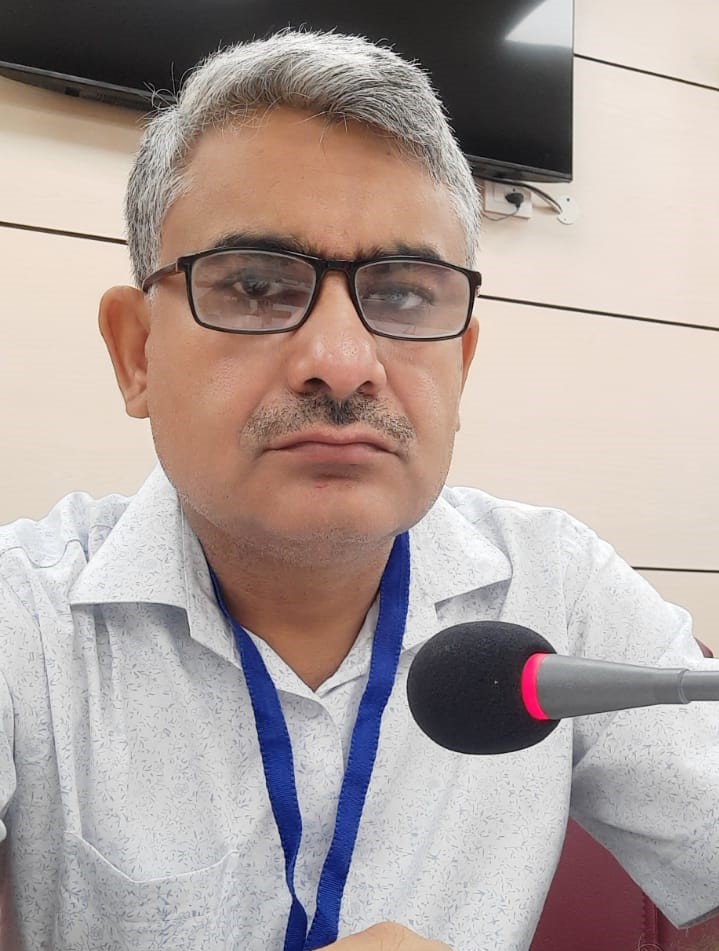PANCHKARM VIBHAG
पंचकर्म विभाग
| प्रोफेसर - | 1. | ---रिक्त--- | |
| रीडर - | 1. | ---रिक्त--- | |
| लेक्चरर - | 1. | डा० जितेन्द्र कुमार |  |
| 2. | Dr. Aditya dev |  |
|
| 3. | ---रिक्त--- | ||
Description :
SKD DEPARTMENT OF PANCHKARMA Provides ‘Panchkarm’ treatment and teaching strictly in accordance with the ancient traditions of Ayurveda. Panchakarm Process involving steps that call for expertise and experience,
Panchkarm comprises 5 steps-
1)‘Vaman’ (Vomiting)
2)‘Virechan’ (Purgation)
3)'Vasti(Enema)
4)Nasya(Nasal Cleaning)
5)Raktamokshan(The removal of impure blood).
The ambience, surroundings of the skd panchkarma department encourage the patients to remain in tranquility.
AIMS AND OBJECTIVE OF PANCHKARMA :
To treat the diseased persons with various purification procedures.
To prevent diseases by enhancing the immunity
To maintain the health of health individuals.
PANCHKARMA
panchakarm Poorva Karma (Preparatory Panchakarma Techniques) After doing a detailed examination of the patient through the different diagnostic methods, a physician decides whether patient should undergo a samana (pacifying) therapy or sodhana (purifacatory) therapy. Before starting Panchakarma one has to undergo preparatory treatments called Poorvakarma (preparatory techniques).
A. SNEHANA (OLEATION)
Snehana course is decided based on severity of the condition as well as the nature of the patient. While taking snehana the patient has to follow strict pathya (dietary and activity restrictions), which is also prescribed for every treatment in Panchakarma.
b. SVEDANA (SUDATION)
As mentioned earlier, a er oleation, the waste materials blocked in the body channels become unctuous, and the channels become lubricated. Through svedana these waste materials are brought into the main body channel (mahakoshtha) before it is expelled through the main techniques of Panchakarma.
PRADHAN KARM :
panchakarm_Rectum, exhaustion, anger, grief, fear, excess hunger and thirst, jaundice, anaemia, various types of diabetes, and diseases of pitta origin, women who are menstruating or pregnant or delivered recently. In case of emergency in these conditions, it can be done mildly. Apart from being the preparatory techniques for Panchakarma these two methods (sneha, sveda) are used as part of samana treatment as well. Present day Ayurvedic massages or steam baths without purification techniques can be grouped under this category.
Panchakarma – Pradhana Karma (Main Techniques)
A. VAMANA (EMESIS)
Emesis is usually given for kapha type of disorders. Vamana is good for all kapha disorders. It helps in improving sleep and reducing excessive sleep; it is useful in treating mental disorders, asthma, epilepsy
skin diseases (visarpa, kushtha), anaemic conditions, migraine, poisoning, infertility and minor conditions like pimples etc.
B. VIRECHNA(PURGATION)
Purgation is mainly done for pitta type of conditions. It also takes care of the kapha, which is located in the place of pitta.
C. BASTI (MEDICATED ENEMA)
Medicated enema is highly effective in vata type of disorders. It is also applied in other dosa disorders as well. Basti is considered as half of the treatment in Ayurveda. There are two types of medicated enema. They are done with decoction (kashaya) and unctuous materials (sneha) like oil, ghee etc.
D. NASYA (NASAL MEDICATION)
Nasya is applied in kapha disorders. This is very e” ective in disorders above shoulders. It is applied in unconsciousness, headache, hemiplegia, other neurological disorders etc.
E. RAKTMOKSHA (BLOOD LETTING)
panchakarm Apart from this raktamoksha (blood letting) is also considered as one of the techniques in purification. Blood becomes impure due to activities and food that aggravate pitta and kapha. For removing the impure blood, these techniques are used. There are four different types of methods used – Siravedha (cutting the blood vessel), prachana (pricking), jalouka (application of leech), sringa, alabu, ghatika (application of horn etc.)
Presently 1 Assistant professor with 2 non-teaching staff were working in this department
